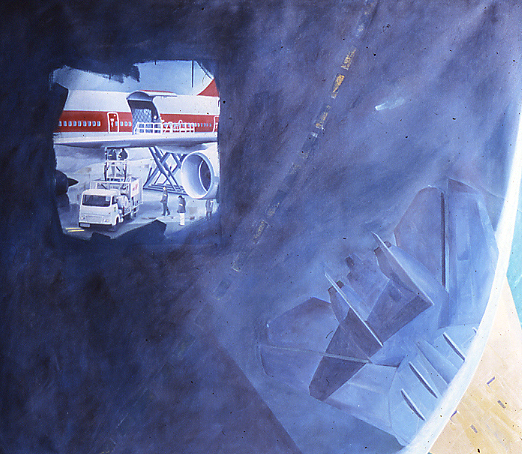You may, but…
Back in 1997, during the very first days of Walk the Arts painting workshops in Tuscany and Provence, I would paint with the group. After a couple of years, I came to realize that I was not fully dedicating my time to my budding artists. Indeed, teaching art requires concentration: detection-correction-suggestion. Moreover, it requires the ability to understand the individual needs and expectations. And with our groups of eight students, rest assured that I do not stop.
 When prospective travelers are calling us for their future painting workshops in Italy or in France, they want to know if the instructor is qualified and ask to see some of his works. We are extremely aware of the importance of this issue. So let’s address it immediately.
When prospective travelers are calling us for their future painting workshops in Italy or in France, they want to know if the instructor is qualified and ask to see some of his works. We are extremely aware of the importance of this issue. So let’s address it immediately.
We “are” extremely qualified, the reason why our art classes and painting workshops have been accredited by universities and colleges in the US, Canada, and Singapore. We also fulfill the Art Teacher recertification requirements.
Let me try to explain this using the pyramid chart above. It shows the art skill level distribution of participating artists of our art workshops in Italy and France during the last 12 years – yep! we keep track of everything.

Walk the Arts (Yves M. Larocque) giving a talk at the National Gallery of Canada (Dec. 2019).
Of course, a bit more than half of our participants are “beginners”. They want to feel the joy of creation and tend to travel with a sense of mission and accomplishment. Every morning, at 9:00 a.m. we teach them the rudiments of plein air painting, perspective, colour theory, and much more. As for our “intermediate artists” seeking to push forward their art, they attend these morning classes always saying, “Wow, this is another way to learn what I was taught at art school”. As for the advanced students, they see our art class as a refresher course. And incredibly, our BFAs and MFAs, say, “Eh, we never learned that at the university.” As for our established worldwide renown artists (such as Vicky) and our university graduates (Kim), very well locally known, they see our workshops as an art retreat, a time to reflect upon their new series while conversing with us. It is a reason we also had a few “writers in residence”.
During our workshops, we enjoy not only having participants of all levels but also working in different art styles, from realism to abstraction. It is true that some high realist painters hesitate to embark with us. They want to know if the instructor is as realist as they are, and we are not. But this does not prevent us from helping them to explore their own creative path. Can they advance their realist skills during one of our art workshops? Yes. Knowing that all techniques are available on YouTube, we push the discussion on realism, by inviting them to paint that fraction of a second of their lives. To depict that very short fleeting moment that makes that life experience so “real” and intense. This can also be done through the landscape or the imagination.
But most important, what is also gratifying for us at Walk the Arts, is that we all become teachers. Levels 1 and 2 guide levels 3, 4 and 5, and so forth going down this pyramid of learning. Sometimes, I am just a moderator, someone who facilitates the distribution and the meshing of information. This also happens during our candlelit, long gourmet dinners, and our two positive and constructive group crits.
Moreover, over a glass of wine or Prosecco, we have a few art theory and art history PowerPoint presentations which are impossible to find on the Internet. Why? Because these lectures are novel, they are the product of academic research and teaching experience. These talks are not pretentious as some may think, but down-to-earth for good comprehension.
To conclude. Our long years of experience in the studio and in classrooms and our various diplomas make us believe in content. We all want new content and not mere repetition.
So why do we attend a painting workshop? We attend a workshop to learn from each other, share our passion, live a art experience and enjoy the power of knowledge through creation. This is what we offer at Walk the Arts.
And by the way, our workshops are for everyone, even if you are not an artist, just someone to enjoy Italy, France, and South America.

Yves M. Larocque, Val d’Orcia (2019) oil on wood, 8 x 8 in.
Val d’Orcia (2019) > Expressive, done with the “let go” philosophy. Was painted between two workshops, just before the storm. It is a one-hour painting on location (30 minutes looking and mixing colors + 30 minutes applying the paint). An extra 15 minutes at the studio after the oil was a bit tacky. I do love Phtalo blue, but it is Ultramarine that I recommend for Europe.

Yves M. Larocque, Requiem 7 (1986), 56 x 72 in., private collection (USA).
Requiem VII (1986) > Done many years ago during the Reagan years. Very realistic with a strong political message.


Hello Yves,
Are you doing any plein air workshops on warm sunny locations in late January or February 2020?
Please say yes…
Olga
Sent from my iPhone
>
Hi Olga,
“Yes!”
Why not attending Studio Colombia when it will be sub-zero cold”
Hope you will join us!
Yves at Walk the Arts